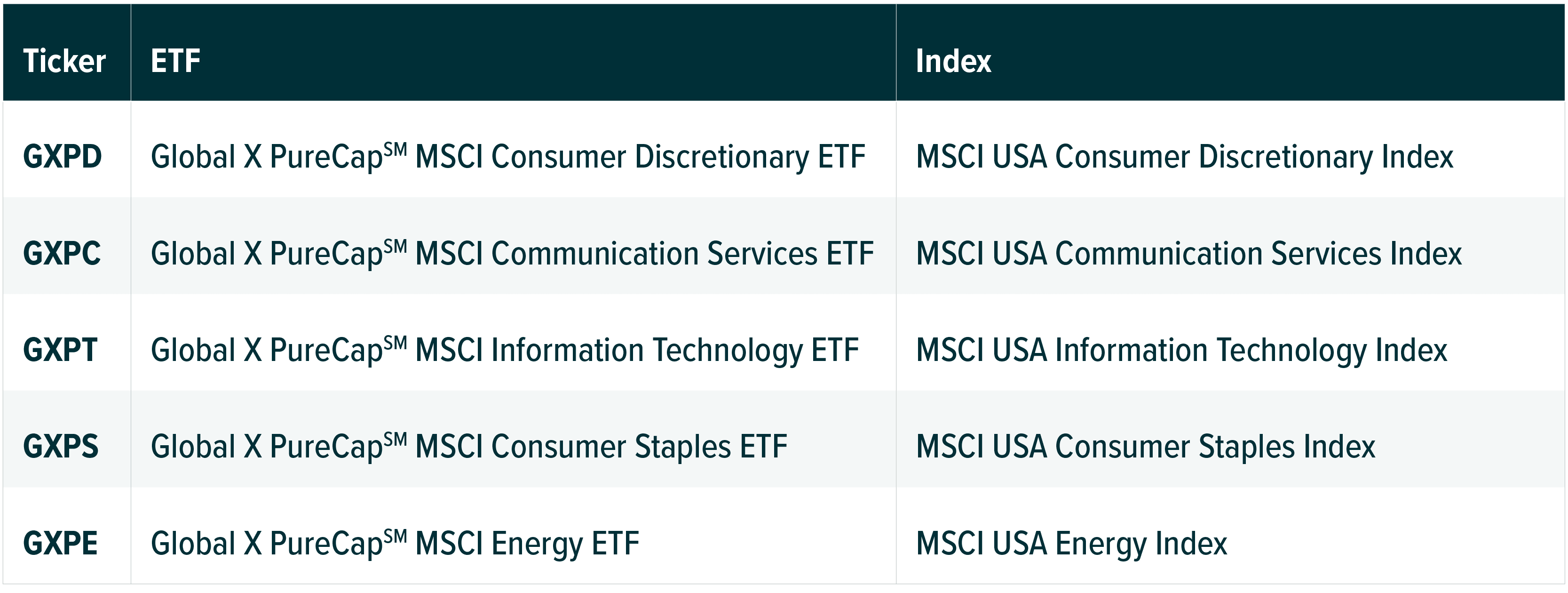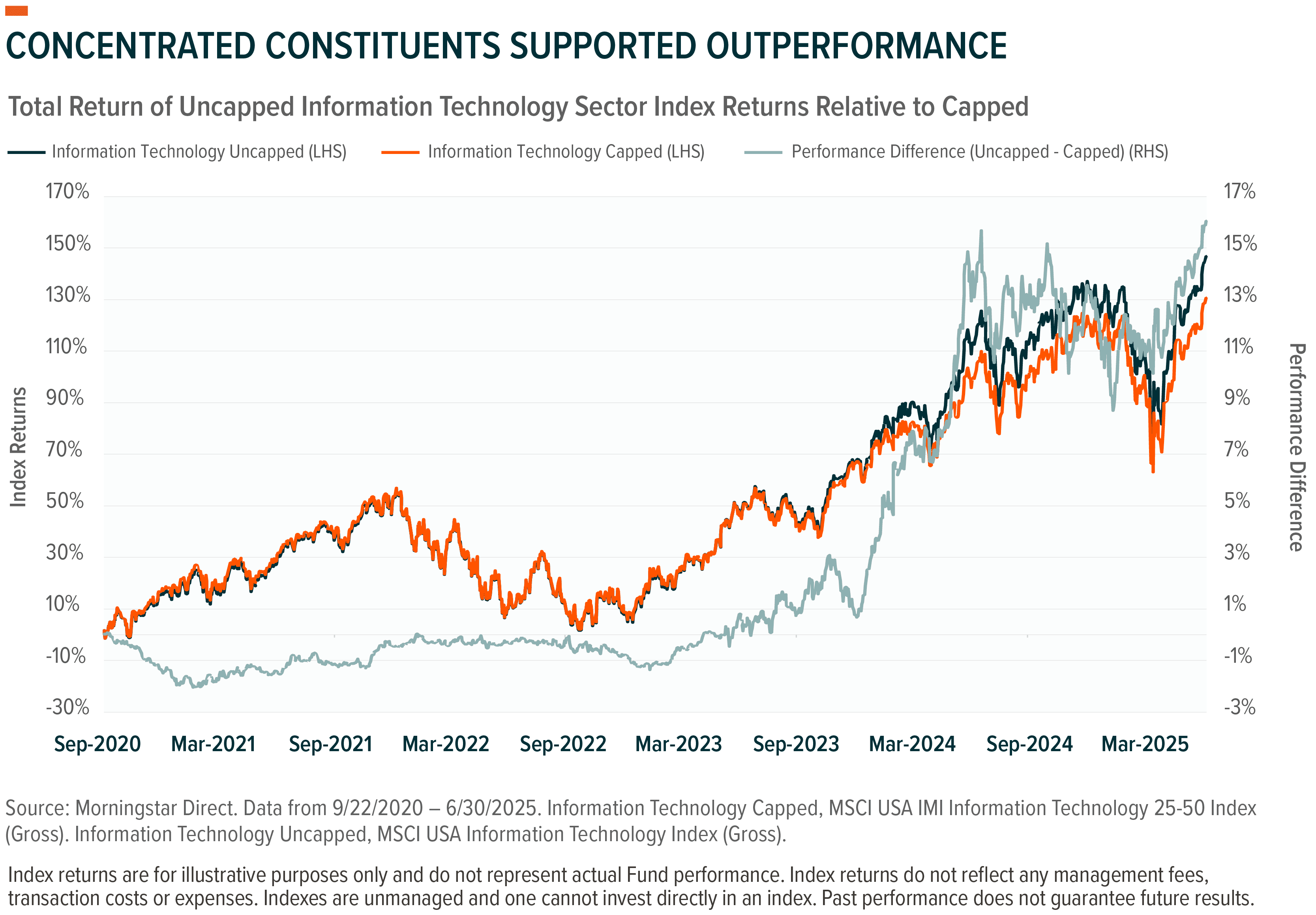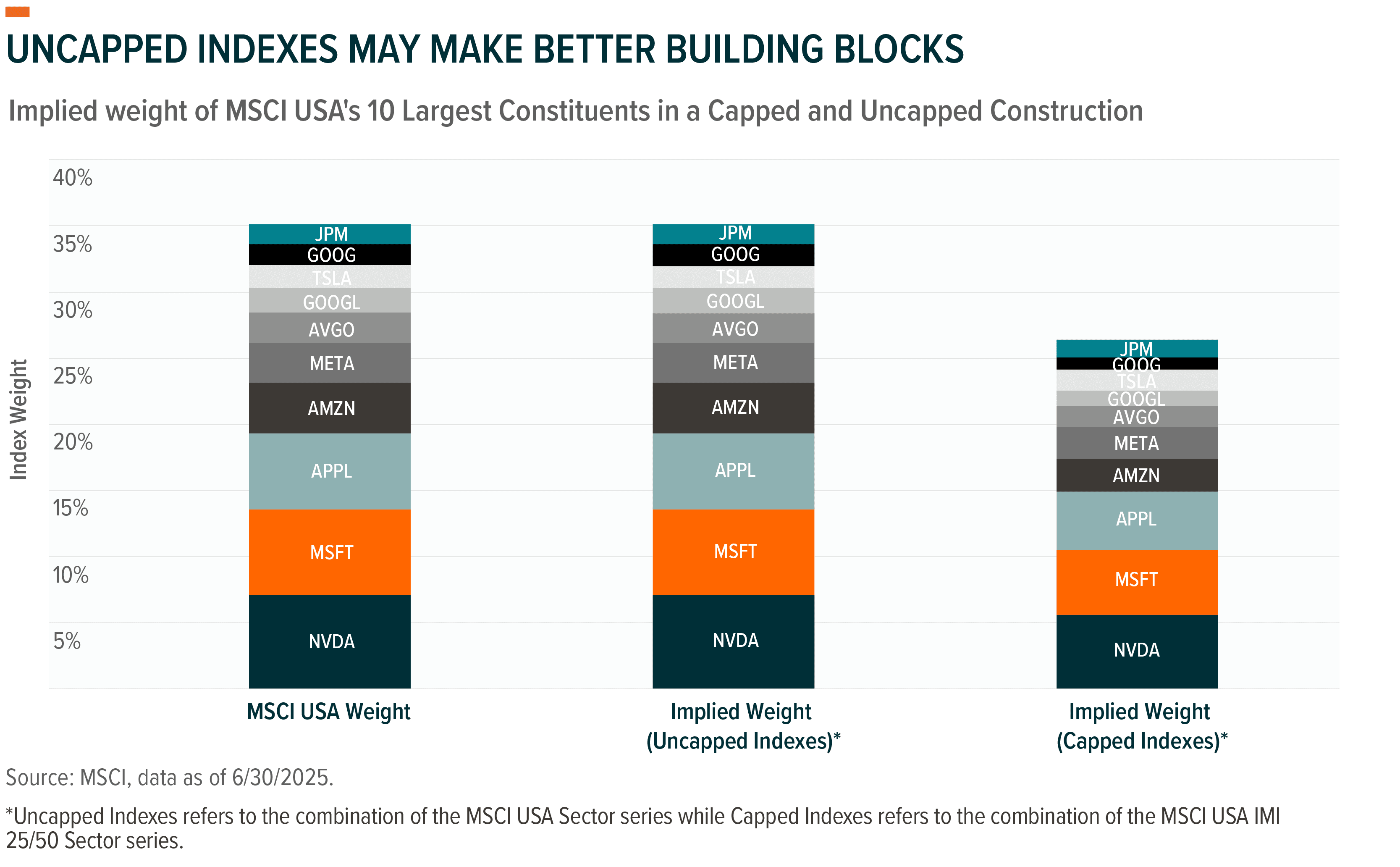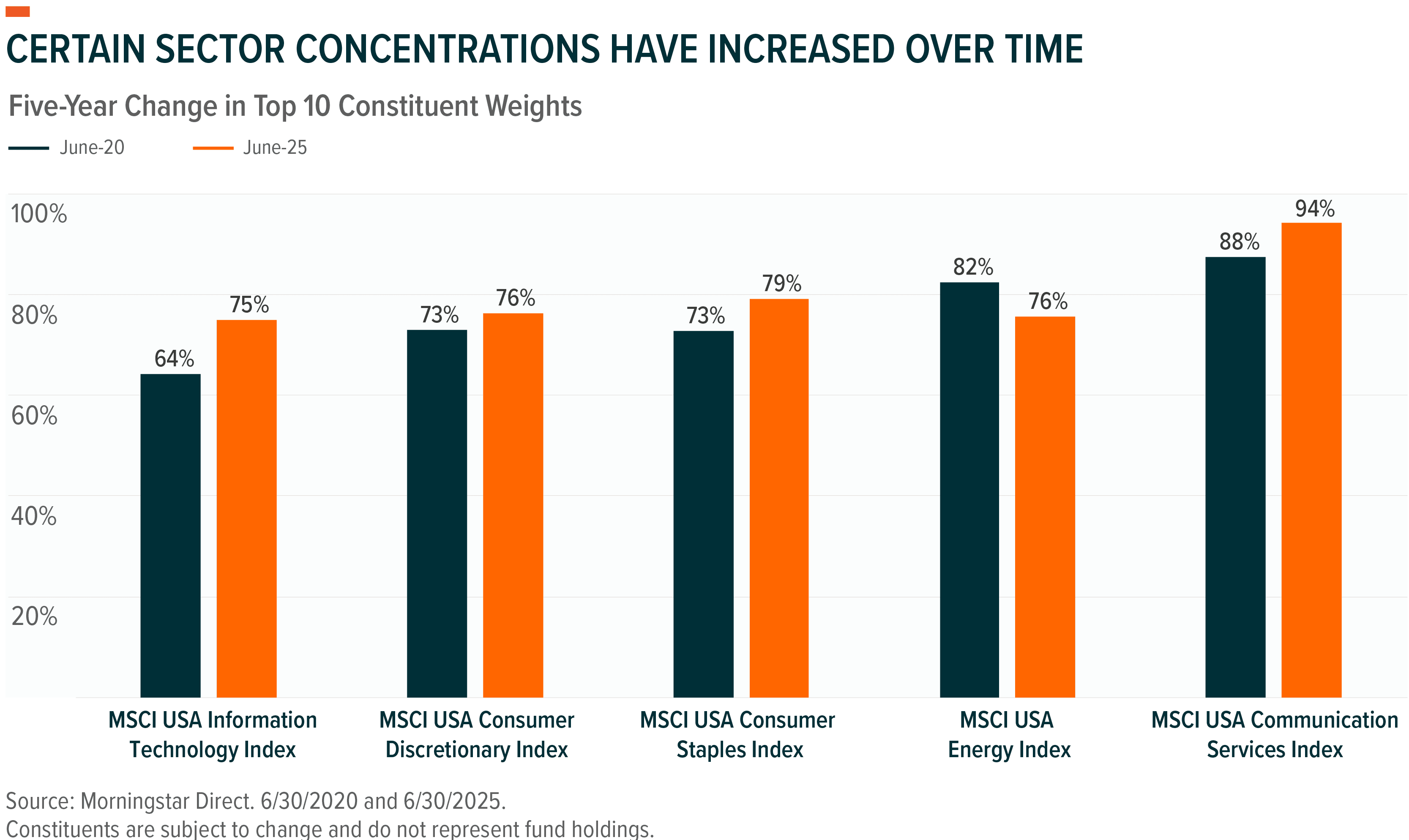Introducing the Global X PureCap℠ Suite: Exploring Innovation Beyond Traditional Sector Investing
Jul 23, 2025
On July 23rd, we listed five ETFs as part of our PureCapSM suite: the Global X PureCapSM MSCI Consumer Discretionary ETF (GXPD), Global X PureCapSM MSCI Communication Services ETF (GXPC), Global X PureCapSM MSCI Information Technology ETF (GXPT), Global X PureCapSM MSCI Consumer Staples ETF (GXPS), and the Global X PureCapSM MSCI Energy ETF (GXPE).
This suite of ETFs represents an evolution beyond traditional sector-based investing. As concentration in certain industries increases, the security weighting caps often built into indexes have become more impactful. The Global X PureCapSM suite includes five ETFs that aim to track the MSCI USA sector indexes in sectors that would be most impacted by weighting caps. By seeking to track uncapped sector indexes, our PureCapSM suite can potentially provide exposure that is more reflective of the actual concentration within each sector represented.
Key Takeaways
- Funds registered under the Investment Company Act of 1940 (“40 Act”) must adhere to weighting restrictions, including a limitation that a company cannot exceed 25% of a fund’s assets and the aggregate weight of companies representing 5% or more of the fund cannot exceed 50%.1 This is generally known as the “25/50 rule”.
- The 25/50 rule is frequently integrated directly into indexes that funds track, and this has grown more impactful for sector-focused investments as concentration has risen.
- The PureCapSM funds can potentially serve as better building blocks for investors that use sector funds to replicate a full equity index and are seeking pure market capitalization exposure.
Why Indexes Aren’t Always Free from Fund-Level Rules
The 25/50 rule is a diversification requirement under Subchapter M of the Internal Revenue Code that must be followed by all regulated investment companies to maintain pass-through taxation. While this rule applies equally to all 40 Act ETFs and mutual funds, including our PureCapSM suite, it does not have to apply to indexes. Despite this, indexes that are designed to be tracked by funds generally incorporate a version of those diversification requirements directly into their rules.
The impact of the decision to incorporate fund diversification rules on indexes that are designed to track a certain sector depends on how concentrated that sector is. The more concentrated it is, the more the weights of the largest constituents must be adjusted to align with fund diversification requirements. Over time, the concentration of certain sectors has risen dramatically as the market caps of the largest companies have grown. This has heightened the effect that weighting caps on sector indexes have had over time.
Introducing the Global X PureCap Suite
To address these growing distortions, Global X developed a new suite of ETFs that aims to reflect the uncapped or pure market capitalization sector composition more accurately. The Global X suite of PureCapSM ETFs includes five funds that aim to track distinct sectors indexes derived from the MSCI USA Index, which covers approximately 85% of the market capitalization in the United States.

While the PureCapSM suite is subject to the same diversification requirements as any other regulated investment company, minimizing return deviations between the funds and the uncapped indexes may offer a more accurate representation of the full economic footprint of the largest constituents within each sector. The funds seek to minimize return deviations from their respective indexes while adhering to diversification rules through representative sampling. At certain times, the funds may invest in ETFs or securities with similar characteristics to index constituents in an effort to closely track the index. In essence, the PureCapSM funds target a portfolio that is more reflective of the true composition for each sector, while traditional sector funds incorporate regulatory constraints through the selection of indexes that they aim to track.
Small Differences Potentially Making Large Impacts
While the methods in which the 25/50 rule are applied may seem to be of minor importance, they can have a significant effect on weighting, performance, and the ability to use sector ETFs as a building block for a broader equity portfolio.
Taking the MSCI Information Technology Sector as an example, the top three weights belong to Nvidia, Microsoft, and Apple. In the uncapped index, these three companies account for 57% of the weights. In the capped version, the MSCI USA IMI 25/50 Information Technology Index, these constituents account for 46%.2 That 11-percentage point difference across just three names contributed to the outperformance of the uncapped index by 12% since their common inception in 2020.

Beyond affecting performance, the weighting deviations can create challenges for investors that use sector indexes to construct a broad equity portfolio. Deconstructing an equity index into its component sectors can allow investors to take active tilts, but weighting caps may cause unintended differences. The table below demonstrates that effect by comparing the weights of the top 10 constituents in the MSCI USA Index relative to the implied weights for both the capped and uncapped indexes. Implied weights are calculated as the product of the relevant sector weight in the MSCI USA Index and the constituent weight in the corresponding sector index. Within the top 10 holdings alone, the deviation is significant. The total difference is over 8% and the single-constituent difference is as high as 1.6%.

Conclusion: Reframing Sector Exposure for Modern Markets
As sector concentration has intensified and the limitations of traditional capped indexes become more pronounced, the Global X PureCapSM suite offers a modern approach to sector investing that we believe aligns more closely with the evolving economic footprint of leading companies. By seeking to track uncapped sector indexes and using a representative sampling strategy, the PureCapSM ETFs aim to preserve the integrity of index-based investing while working within regulatory boundaries. For investors aiming to construct precise, sector-driven allocations or potentially replicate broad benchmarks more accurately, the PureCapSM approach represents a meaningful evolution in beyond traditional sector-based investing.
Related ETFs
GXPD – Global X PureCapSM MSCI Consumer Discretionary ETF
GXPC – Global X PureCapSM MSCI Communication Services ETF
GXPT – Global X PureCapSM MSCI Information Technology ETF
GXPS – Global X PureCapSM MSCI Consumer Staples ETF
GXPE – Global X PureCapSM MSCI Energy ETF
Click the fund name above to view current performance and holdings. Holdings are subject to change. Current and future holdings are subject to risk.
